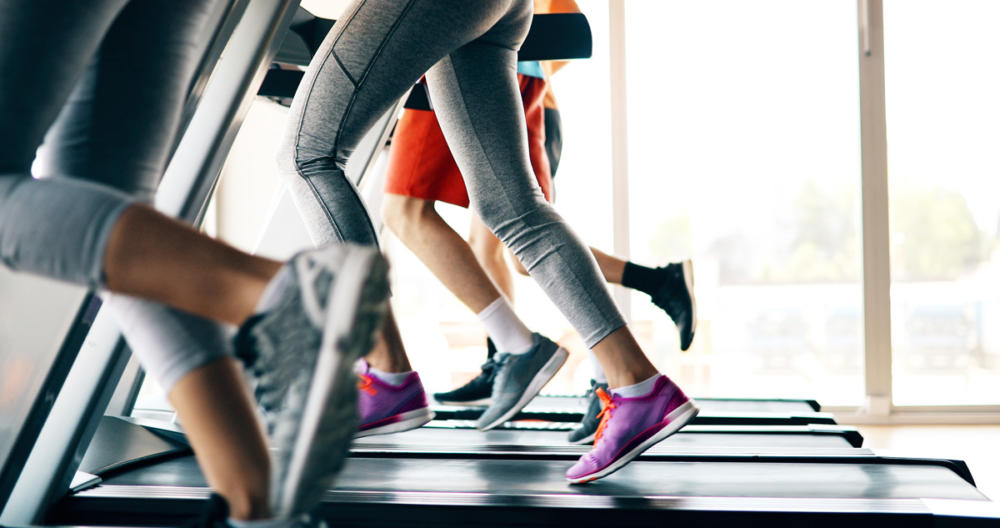by Susan Williams PT, DPT | Metro Center Location
The Academy of Nutrition and Dietetics created National Nutrition Month to increase awareness of nutrition’s importance and how nutrition can help you achieve your goals. The month is geared toward educating people on the importance of making healthy food and drink choices, improving eating habits, and incorporating more physical activity to prevent the onset of many chronic diseases.
Let’s Celebrate “National Nutrition Month” Together
I hear a lot from my clients about what they “used to be able to do” and “used to look like” before they were injured. Many people undergoing physical therapy tend to gain weight due to their pain-limiting movement and exercise, along with the emotional tendency to eat when they are suffering. Here are a few tips that may help you look, feel, and live better.
Cardio Versus Cutting Calories
The two most effective ways to lose weight are adding cardiovascular exercise, such as walking, biking, and running, and decreasing caloric intake. There are benefits to choosing one over the other. For example, if you have significant arthritis in your knees, making walking painful, initially cutting calories to lose weight may be the smarter and more comfortable choice. Alternatively, adding cardio may be your only option if you have been dieting for a while and are already at a low caloric intake. However, both may be used in combination to accelerate and meet your goal.
Fruit and Vegetable Intake
We need fruits and vegetables in our diet to ensure that we are getting a full dose of all the essential minerals and vitamins our bodies need to perform optimally. However, one of the biggest problems I see from patients is excessive carbohydrate intake. While fruits may be a better choice than potato chips, one small apple has 21g of carbohydrates (77 calories), and one medium banana has 27g of carbohydrates (105 calories). Adding one piece of fruit to each meal and snack can equate to an additional 125g of carbs or 500 calories over the course of the day. Be mindful of the amounts. Try for 4-5 servings of each per day; here’s a great infographic.
Timing of Meals
One of the most common myths I hear is that you cannot eat after 8 p.m. or all the food will be stored as fat; the second most common is that you need to eat multiple small meals a day to speed up your metabolism. Both could not be further from the truth. Eating at night will only cause the scale to give you a higher number in the morning.
Recent studies have shown that fat loss is achieved in a caloric deficit, regardless of whether a majority of calories were consumed at night or spread evenly throughout the day. When consuming the same number of calories over the day, be it between two large meals or six small meals, there is no difference in metabolic rate in overweight or obese individuals. Furthermore, this was also true in healthy-weight individuals when consuming two versus seven meals per day. Eat the number of meals you need when it works for your schedule to meet your nutritional needs each day without stressing about the timing.
Alcohol Consumption
This one is short. Don’t forget that your nightcap not only has carbohydrates but it also has alcohol. Alcohol is a toxin to the body, which means that your body puts all stomach contents needing to be digested on hold while it rids your body of the alcohol. Each gram of alcohol requires nine calories of energy to break down and free it from your body. Even light beer adds nearly 80-125 calories for every 12oz, and a glass of red wine can add between 125-150 calories for a 5oz pour.
Proper nutrition can:
- Increase Athletic Performance. Formula 1 drivers wouldn’t put regular 87-octane gas in their cars before a race. Similarly, a marathon runner wouldn’t gorge themselves on Burger King before running a marathon. In order for your body to function at optimal performance, it should be fueled by premium fuel. Instead of foods laden with empty calories, fats, and sodium, athletes should focus on consuming real whole foods. Like lean proteins and carbohydrates that are low glycemic index (GI) or “complex” carbohydrates. Lean protein from sources like chicken, fish, or legumes helps repair muscle tissue after strenuous exercise. Low-GI carbohydrates like sweet potatoes and brown rice are broken down and absorbed slowly to produce the steady energy your body needs.
- Decrease Recovery Time. In addition to improved athletic performance, proper nutrition can impact the time you spend recovering from injury. Inflammation is our body’s way of responding to injury or something foreign in the body. Eating properly can actually decrease inflammation that damages tissues, impacts joints and arthritis, and impedes recovery. Eating foods like those in the Mediterranean diet has been shown to decrease inflammation, creating an easier path to recovery.
Fight Off Sickness and Disease
The pH scale runs from 0, being the most acidic, to 14, being the most alkaline. A pH of 7 is considered neutral. A healthy body should be slightly alkaline, with a blood pH level of around 7.4. Eating a diet of highly processed acidic foods can throw off your pH level, leading to inflammation, sickness, and disease. Foods that promote an acidic environment are laden with sugars or artificial sweeteners, highly processed, or fried at high temperatures. They encourage the same inflammation that impedes recovery and promotes injury, sickness, and disease, which thrives in an acidic environment. Eating a healthy diet that promotes a balanced pH level can help combat these issues.
What to do:
- Eat Real Food. Being mindful of your nutrition can seem easy, but it’s actually quite difficult in today’s environment. Avoiding fast food is the first step in the right direction. But even foods marketed as “healthy” can be processed junk in disguise. The best way to ensure you’re eating real, whole foods is to read labels. If there are a ton of ingredients you can’t pronounce, it usually means that it has been refined or processed. Opt for real foods like fruits, vegetables, nuts, whole grains, and protein sources from legumes, fish, and chicken. Making your own meals ensures that you know exactly what ingredients go into it. It may seem like more work to prepare your food, but there are resources like Pinterest and healthy cookbooks.
- Avoid These Foods. You don’t have to avoid them altogether; be aware of what you’re putting into your body and consume in moderation. Limit eating sugar and high GI simple carbohydrates like refined flour found in breads, cereals, and pasta. These foods are broken down quickly, providing a burst of energy, spiking blood sugar levels, and causing a crash. Monitor your sodium intake as well as trans fats, and avoid artificial sweeteners altogether. They provide no health benefits, are chemical-laden, and throw off the body’s natural hormones. Most of these ingredients are found in fast food, prepackaged and processed foods, and “diet” foods. Eating these ingredients can also lead to diabetes, heart disease, and a myriad of other health issues.
At Foothills, our goal is to get you back to the activities you love. For more tips on how to live a healthy life, contact Foothills Sports Medicine Physical Therapy to schedule an appointment!








